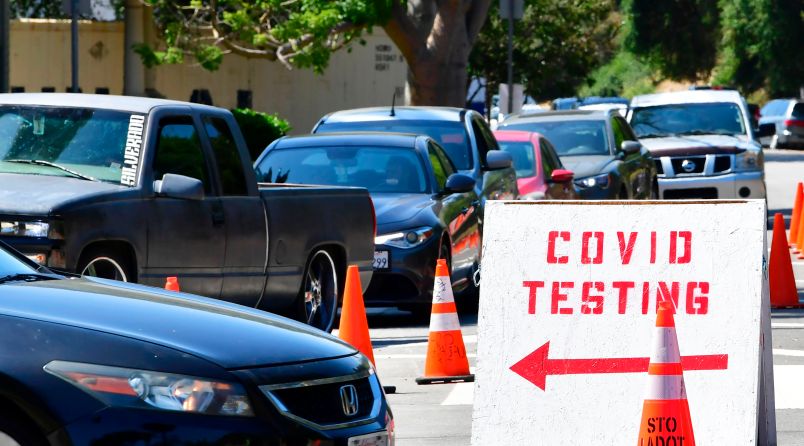For weeks, COVID-19 testing in the United States has been complicated for many by a single factor: the time it takes to get a result.
Though the sample collection aspect of testing is widely available, it can take up to two weeks in some cases for people to learn the results of their test if it’s being processed by the nation’s commercial laboratories. That delay has led some to ask what the purpose of testing is at all, if the results aren’t available in time for patients to make decisions about whether or not to quarantine.
But Health and Human Services Assistant Secretary for Health Brett Giroir told reporters on Thursday that concerns over the issue were exaggerated, and that such cases were likely to be “outliers.”
Half of the country’s testing is done in hospitals with in-house laboratories or using relatively instantaneous point-of-care tests, Giroir said. He went on to argue that criticism saying that some testing takes between 10 and 14 days is inaccurate.
“The thought of it being routinely 10 to 14 days is just not true, and I think it sends a bad public health message that goes against the goals we all have,” Giroir said.
Rapid point of care tests remain broadly unavailable to the general public, though Giroir discussed an initiative by which HHS is supplying nursing homes with the testing equipment.
Tests that have gone through commercial labs — by which the samples are sent to centralized facilities for the results — have encountered bottlenecks since mid-June, as the laboratories struggle to accommodate tens of thousands of test requests each day.
That problem led Dr. Anthony Fauci to suggest “pooling” tests — meaning that groups of samples would be tested together. If a positive COVID-19 test emerged, only then would the samples be tested individually.
Giroir added that last week, 45 percent of commercial labs completed tests within three days, and that over the past week, the rate of tests completed within three days was up to 56 percent.
It’s not clear how long it took to test the other half of samples.
“Testing will not control an outbreak when you have 70k new infections a day, what will control the outbreak is personal responsibility,” he added.







(/s of course)
… what will control the outbreak is personal responsibility,” he added.
Personal responsibility doesn’t seem to be cutting it with the folks who want to congregate in bars, party or just be unencumbered by burdensome face masks, among other causes.
And why would it? We have an administration whose leadership, when not calling on their supporters to “liberate,” “reopen,” or send children back to unfunded and crowded schools, regularly makes appearances at events that disregard protective measures like masking and social distancing.
As it is used, this ‘personal responsibility’ is just an excuse used to shift blame.
I suspect, with the death today of higher profile Herman Cain and the recent infections of both the National Security advisor and Gohmert, things might get just a little more serious for this administration. It’s inching its way closer to the President and his family. At some point, it’s going to hit one of them.
HHS
Hellacious
Heath
Sycophants
My local school district is hesitant to open in the fall if test results take too long. What will they do if a kid at school has a fever? Send them home, but what about the rest of the class and the teachers, etc.
They need rapid turnaround! This is such a huge part of the problem, and the administration is to blame. Testing should be ubiquitous and results rapid, surely by now.